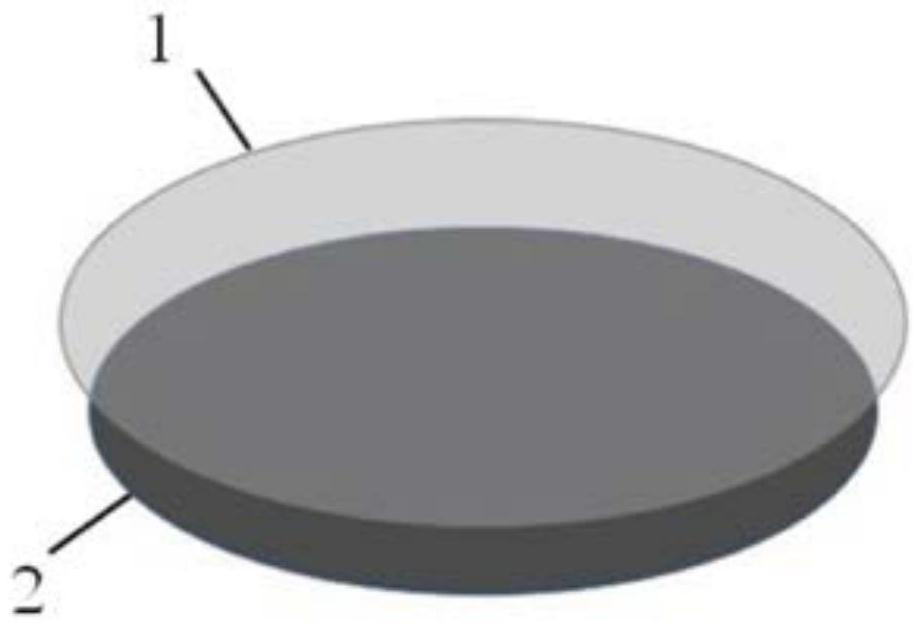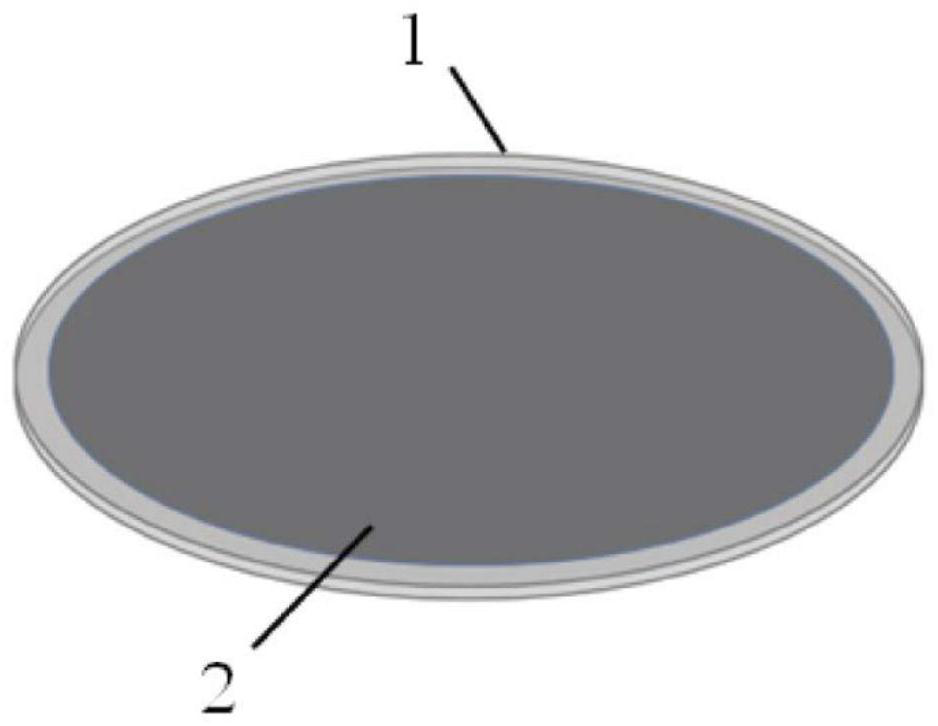Method for reducing transparency and resistivity of lithium niobate or lithium tantalate wafer
A technology of lithium tantalate and lithium niobate, which is applied in the field of reducing the transparency and resistivity of lithium niobate or lithium tantalate wafer, can solve the problem of difficulty in controlling the blackening speed of the wafer, the reduction degree of the wafer, the easily broken reducing metal or compound powder, The problem of uneven reduction degree of wafers can reduce the uniformity of light transmittance, reduce the blackening treatment time, and improve the reduction efficiency and uniformity.
- Summary
- Abstract
- Description
- Claims
- Application Information
AI Technical Summary
Problems solved by technology
Method used
Image
Examples
Embodiment 1
[0041] The lithium niobate wafer (the lithium niobate wafer has been ultrasonically cleaned, and its surface moisture has been blown dry) and the pure cotton paper are alternately arranged to form a two-layer laminated structure, the laminated structure is placed in a vacuum annealing furnace, the vacuum pump is turned on, and the adjustment The vacuum pressure was 0.1kPa, then the gas valve was opened, nitrogen gas was introduced (the nitrogen flow rate was 0.1L / min), the temperature of the annealing furnace was adjusted to 300 °C, and the temperature of the annealing furnace was kept constant for 3 hours, and then the temperature of the vacuum annealing furnace was lowered to 25 °C, and the gas was turned off in turn. Valves and vacuum pumps continue to blacken the lithium niobate wafers until the vacuum annealing furnace is opened, and the lithium niobate wafers are taken out to complete the blackening treatment. The blackened lithium niobate wafers are yellow and black.
[...
Embodiment 2
[0047] The lithium tantalate wafer (the lithium tantalate wafer has been ultrasonically cleaned, and its surface moisture has been blown dry) and the fiber cloth are alternately arranged to form an eight-layer laminated structure. The laminated structure is placed in a vacuum annealing furnace, the vacuum pump is turned on, and the vacuum pressure is adjusted Then open the gas valve, introduce nitrogen (the nitrogen flow rate is 0.3L / min), adjust the temperature of the annealing furnace to 400 ° C, and treat it at a constant temperature for 5 hours, then reduce the temperature of the vacuum annealing furnace to 25 ° C, close the gas valve and vacuum pump in turn. , continue to blacken the lithium tantalate wafer until the vacuum annealing furnace is opened, take out the lithium tantalate wafer to complete the blackening treatment, and the blackened lithium tantalate wafer is a black piece.
[0048] The lithium tantalate wafer has a thickness of 0.35mm and a diameter of 100mm; ...
Embodiment 3
[0053] The lithium niobate wafer (the lithium niobate wafer has been ultrasonically cleaned, and its surface moisture has been blown dry) and the pure cotton paper are alternately arranged to form a three-layer laminated structure, the laminated structure is placed in a vacuum annealing furnace, the vacuum pump is turned on, and the vacuum is adjusted The pressure is 0.5kPa, then the gas valve is opened, and nitrogen gas is introduced (the nitrogen flow rate is 0.5L / min), the temperature of the annealing furnace is adjusted to 350 °C, and the temperature of the annealing furnace is kept constant for 4 hours, and then the temperature of the vacuum annealing furnace is lowered to 25 °C, and the gas valve is closed in turn. , vacuum pump, continue to blacken the lithium niobate wafer until the vacuum annealing furnace is opened, take out the lithium niobate wafer to complete the blackening treatment, and the blackened lithium niobate wafer is a gray flake.
[0054] The lithium nio...
PUM
| Property | Measurement | Unit |
|---|---|---|
| thickness | aaaaa | aaaaa |
| thickness | aaaaa | aaaaa |
| diameter | aaaaa | aaaaa |
Abstract
Description
Claims
Application Information
 Login to View More
Login to View More - R&D
- Intellectual Property
- Life Sciences
- Materials
- Tech Scout
- Unparalleled Data Quality
- Higher Quality Content
- 60% Fewer Hallucinations
Browse by: Latest US Patents, China's latest patents, Technical Efficacy Thesaurus, Application Domain, Technology Topic, Popular Technical Reports.
© 2025 PatSnap. All rights reserved.Legal|Privacy policy|Modern Slavery Act Transparency Statement|Sitemap|About US| Contact US: help@patsnap.com



